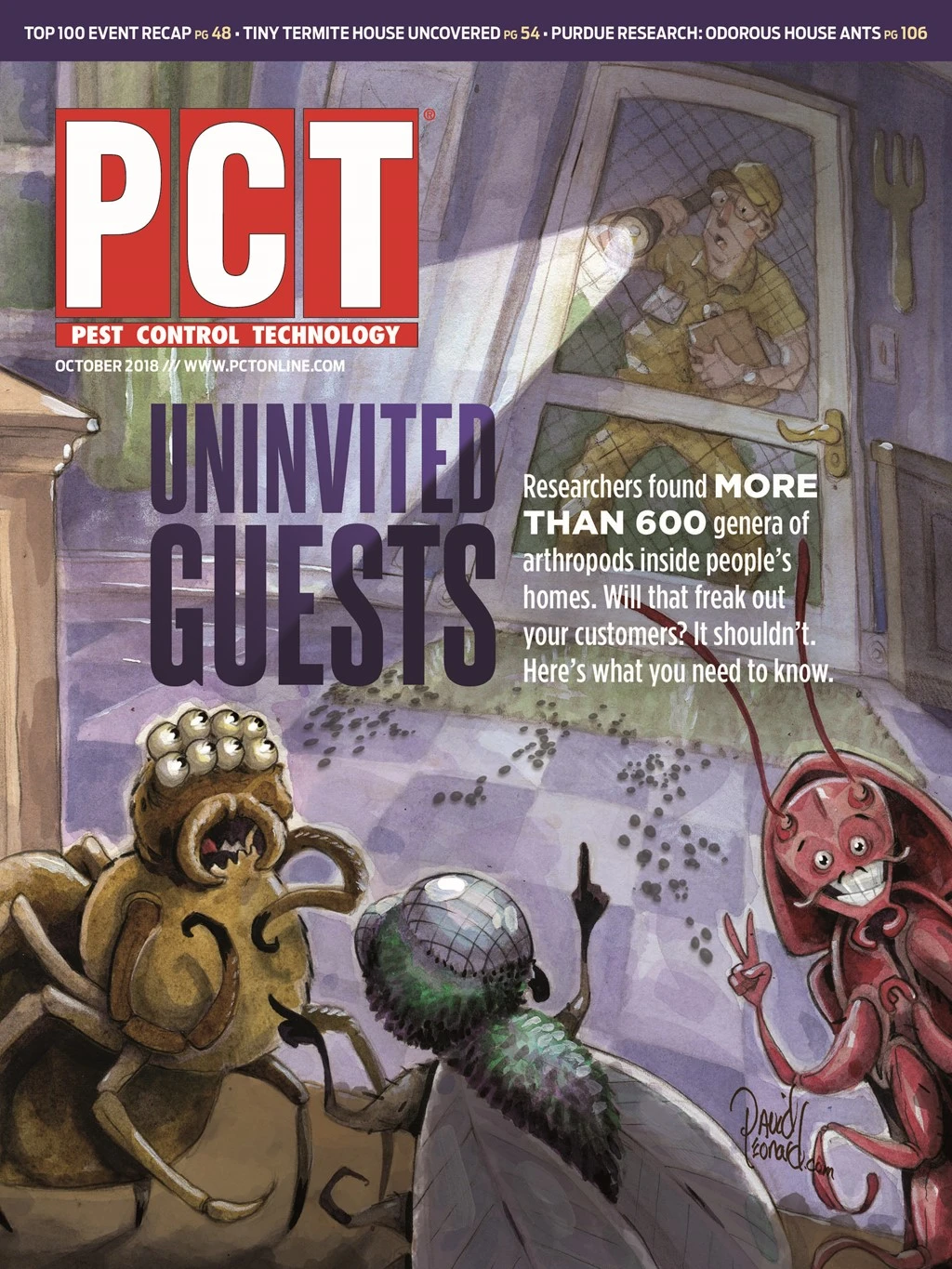They say timing is everything. But do you do your best to create your own good timing? Meaning, are you prepared so that whenever an opportunity presents itself, you’re ready to take full advantage of it?
This month’s cover story is actually a package of several related articles — which start with “Uninvited Guests” — that take a look inside consumers’ minds. The articles hopefully give you insights into what your customers (and non-customers) are thinking...and feeling.
I think our industry has prepared itself well to take advantage of opportunities that have arisen via the news media. (Some would use the word “luck” here but I believe it’s more than that.) For example, it wasn’t that long ago when a national TV appearance by an industry representative was deemed extremely newsworthy in the pages of PCT (the July 2000 issue featured a two-page article about NPMA appearing on the Today show). But today, due in large part to the efforts of the Professional Pest Management Alliance (PPMA), regular TV spots and national print news placements are much more commonplace (so we don’t report on them as much). (Related: See our feature about PPMA’s Tiny Termite House.)
But I also think the world around us has presented pest management professionals with numerous opportunities to talk about our services, independent of the messages the industry is putting out there. What I mean is, there are others not in our industry — national and local news reporters in the consumer press — who write articles about invasive species making their way to different areas, new vector-borne diseases affecting local residents and pest infestations that appear after natural disasters. (Did you see the article about fire ant “rafts” after Hurricane Florence last month?)
What does all of this coverage mean? It means whether you like it or not (and I think you should like it), our industry and the pests we control are much more “out there” than in years past. Insects (whether they’re pests or not), vertebrate pests and disease vectors are everywhere in the news and various social media outlets. You can’t go onto your community Facebook page without someone asking for a recommendation for a pest control company, help identifying a spider or warning neighbors about poisonous caterpillars. (I saw all of these this week on my local Facebook page.)
The same is true in the traditional consumer media. On the day I wrote this column an article titled “The wolf spider is autumn’s most frightening home intruder” appeared on the Washington Post’s website. Pest issues (and topics tangential to pest management) appear daily. From industry-created content to reporters writing articles to social media posts, it’s clear pest management is more top of mind for consumers than ever.
Your technicians are on the front lines every day, interacting with homeowners and commercial clients. As such, how should they respond when they’re asked about an article the customer saw on the news or online? And perhaps, more importantly, can they answer questions by consumers that are based on their (sometimes irrational) fears?
We wanted this month’s cover story to provide your staff a glimpse inside consumers’ minds. On the pages that follow we feature a series of articles that dig into what people are thinking and why they’re thinking that way. The first article is about a study of arthropod diversity that researchers found in homes. If a homeowner questions your technician about this research, can he or she calm customers’ concerns? PMPs who get questions from customers who read headlines about all of these “unwanted guests” have an obligation to provide peace of mind. The bottom line on this particular research: Just because there might be 600 types of arthropods in a home, that doesn’t mean they’re all pests.
NPMA Entomologist Jim Fredericks, Ph.D., explains in the article that the diversity of insects found indoors does not equal abundance. “PMPs must make that distinction to clients between an infestation vs. an introduction,” he says. “One bug does not make an infestation. And, when caught early on, it’s a testament to the pest management practices in place, the inspection and monitoring services that a PMP provides.”
It’s important for technicians to be armed with the facts when interacting with customers. And it’s important to be empathetic as well. We hope this month’s story sheds light on both of these important aspects of the PMP/customer relationship.
The author is editor of PCT. She can be contacted at jdorsch@gie.net.

Explore the October 2018 Issue
Check out more from this issue and find your next story to read.
Latest from Pest Control Technology
- Donny Oswalt Shares What Makes Termites a 'Tricky' Pest
- Study Finds Fecal Tests Can Reveal Active Termite Infestations
- Peachtree Pest Control Partners with Local Nonprofits to Fight Food Insecurity
- Allergy Technologies, PHA Expand ATAHC Complete Program to Protect 8,500 Homes
- Housecall Pro Hosts '25 Winter Summit Featuring Mike Rowe
- Advanced Education
- Spotted Lanternflies, BMSBs Most Problematic Invasive Pests, Poll Finds
- Ecolab Acquires Guardian Pest Solutions





